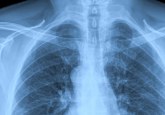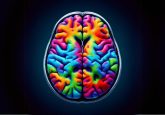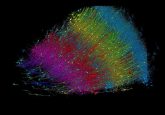Save our skins – AI diagnoses dermatitis complications

A novel AI model can identify complications in atopic dermatitis patients by analyzing diagnostic images.
A group of dermatologists from Tohoku University School of Medicine (Sendai, Japan) have recently created an AI model with the ability to identify atopic dermatitis complications, such as bacterial or viral infections, eczema and skin lesions caused by a type of blood cancer. This technology will enable atopic dermatitis patients to better manage and treat potential complications and diseases.
Itching is a maddening sensation. But why does it feel so good? The reason is simple. Scratching that infuriating tingling feeling actually creates mild pain, meaning these pain signals override the desire to itch and release the feel-good hormone serotonin. For some people, scratching will cause the itch to slink away defeated, but for others with chronic itching conditions, it is an unbearable never-ending cycle.
Atopic dermatitis (atopic eczema) is one such chronic itching condition that affects around 12% of the global population, with highest prevalence in childhood. Symptoms of atopic dermatitis include dry, itchy and inflamed skin and patients are also more susceptible to infections and complications due to weakened skin barrier immunity. These complications can include bacterial or viral infections such as impetigo, herpes simplex and Kaposi varicelliform eruption (eczema herpeticum).
Unfortunately, although complications are common in patients with atopic dermatitis, it can be difficult to distinguish between symptoms of atopic dermatitis itself and symptoms from complications as they can appear to be very similar. Some atopic dermatitis medications can even exacerbate infections. Additionally, a type of blood cancer termed mycosis fungoides can display many of the same symptoms to atopic dermatitis and may also exist simultaneously with atopic dermatitis.
Early and accurate diagnosis of such complications and diseases is therefore of paramount importance to improve treatment outcomes and enable patients to recognize abnormal symptoms.
To solve these problems, the team turned to AI. After training a convolutional neural network (CNN) model with images of atopic dermatitis, mycosis fungoides, impetigo, Kaposi varicelliform eruption and herpes simplex, they assessed the AI model’s diagnostic accuracy utilizing a set of images that had been manually cropped and annotated by dermatologists.
The team discovered that the AI model achieved almost identical diagnostic accuracy to the set of images manually evaluated by dermatologists. The model displayed 90% specificity and sensitivity when distinguishing atopic dermatitis from complications and malignant diseases.
Presently, the team are designing an AI-driven smartphone app that they can apply the CNN image database to. This will allow patients to remotely assess their skin conditions with their phone cameras. The app’s practicality and usability are currently being tested.
“A dermatologist would of course be able to spot the difference, but it is incredibly impractical for an AD patient to visit a dermatologist every day. If only there were some handy, low-cost mechanism that replicated that dermatologist’s knowledge and could be used during a patient’s daily regimen of checking their skin,” stated study co-author Yuta Yanagisawa.
This AI technology could assist and guide patients with managing and diagnosing their skin diseases more effectively, which will improve prognosis and treatment outcomes. Furthermore, this model will alleviate the heavy workload of slowly annotating images that dermatologists experience.




